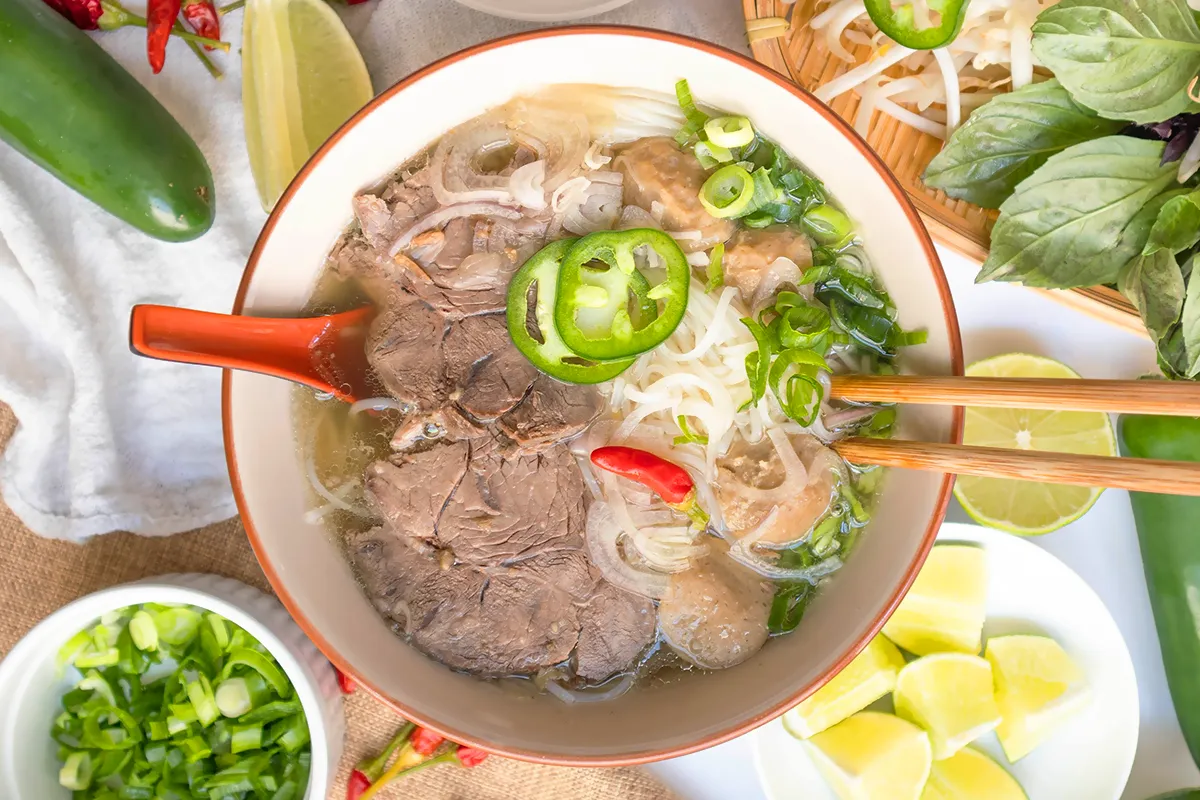When it comes to Vietnamese cuisine, one dish stands out as an emblem of national pride and culinary artistry: Pho. This humble yet profoundly flavorful noodle soup has captured the hearts of millions, both locally and internationally. From its aromatic broth to its harmonious combination of textures, Vietnamese pho embodies the essence of Vietnam’s culinary traditions.
A taste of history
Pho’s origins trace back to northern Vietnam in the early 20th century. Influenced by French colonization and Chinese culinary traditions, pho is a blend of cultures. The dish began as street food in Hanoi, where vendors would carry portable kitchens to serve laborers. Over time, it evolved into a staple of Vietnamese dining, spreading to the south and gaining regional variations.
See more Vietnames Cuisine articles
The perfect bowl of Vietnamese Pho
A bowl of pho is a symphony of flavors and textures, where every ingredient plays a critical role. The dish typically consists of the following:
- Broth: The heart of pho lies in its broth, simmered for hours with beef or chicken bones, onions, ginger, and a medley of spices like star anise, cinnamon, and cloves. This slow-cooking process creates a rich, aromatic base that defines pho’s flavor.
- Noodles: Fresh rice noodles, silky and soft, serve as the foundation of the dish.
- Protein: Pho is traditionally served with thinly sliced beef (pho bo) or chicken (pho ga), though modern adaptations include vegetarian and seafood options.
- Herbs and Garnishes: Fresh herbs like Thai basil, cilantro, and green onions, along with bean sprouts, lime wedges, and chili, add vibrancy and layers of flavor.
- Condiments: Hoisin sauce, sriracha, or fish sauce allow diners to customize the taste to their liking.

Regional Variations
As pho spread across Vietnam, it adapted to regional tastes.
- Northern Pho: In Hanoi, pho is characterized by a clear, light broth and minimal use of garnishes, focusing on the purity of the ingredients.
- Southern Pho: In contrast, Saigon-style pho features a sweeter broth and is accompanied by a wider array of herbs and garnishes, reflecting the region’s abundant produce.
Why Pho is so beloved
Pho’s appeal lies in its versatility and comforting nature. It can be enjoyed at any time of day—whether as a hearty breakfast, a satisfying lunch, or a late-night meal. It is also a dish that brings people together, evoking a sense of community and warmth.
For many Vietnamese, pho is more than just food; it is a cultural icon, a reminder of home, and a symbol of resilience and ingenuity. For international diners, pho offers a gateway into the rich tapestry of Vietnamese cuisine.
Pho around the World
With the rise of global interest in Vietnamese food, pho has become a star on the international stage. Restaurants from New York to Paris serve their own versions of pho, introducing its unique flavors to new audiences. Despite its global adaptations, the essence of pho remains unchanged—a celebration of tradition, flavor, and heart.
Pho is not merely a dish; it is a journey through Vietnam’s history, culture, and identity. Its layers of flavor and aroma invite diners to savor each spoonful, while its simplicity underscores the beauty of traditional Vietnamese cooking.
Next time you visit Vietnam – or stumble upon a Vietnamese restaurant abroad – be sure to try pho. Experience firsthand the dish that has come to define the soul of Vietnamese cuisine.



0 Comment